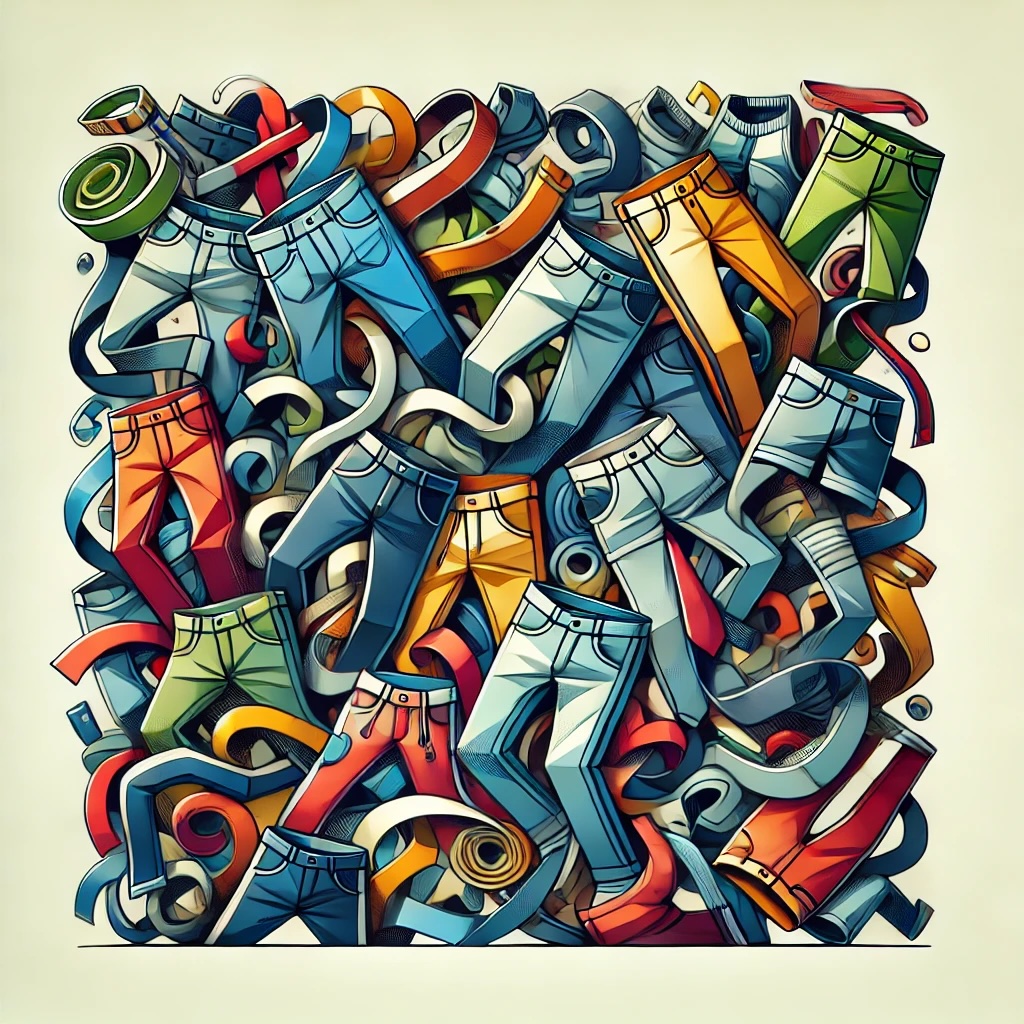More Pants than Pant
So I had a great time on my trip to Naples, Italy (I’ll have to write more about that soon), and after returning to Shanghai I have continued to study Italian through Duolingo and ChatGPT.
One thing that I’ve noticed about Italian is that plural forms require a lot more attention than I’ve ever given them in any of my language study to date. In Spanish plurals take an “s” like in English. Then in Japanese and Chinese, you don’t have a regular plural form, for the most part.
Suddenly in Italian you have “-o” and “-a” turning to “-i” and “-e” and no “s” in sight! So it requires more attention, but it’s interesting.
Meanwhile, studying Italian also brought to my attention another issue that Japanese and Chinese never did: how the word “pants” (e.g. “trousers” for you Brits) is plural. Why is it plural? It’s one piece of clothing like a shirt or a dress. Sure, there are two pant legs in a pair of pants, but there are also two sleeves in a shirt. Italian uses a plural word for “pants” just like English and Spanish.

This got me thinking… what about other languages in Europe? So my buddy ChatGPT helped me create this chart, which seems to be accurate:
| Language | Word | Singular/Plural |
|---|---|---|
| English | pants | Plural |
| Spanish | pantalones | Plural |
| French | pantalon | Singular |
| Italian | pantaloni | Plural |
| German | Hose | Singular |
| Dutch | broek | Singular |
| Portuguese | calças | Plural |
| Russian | брюки (bryuki) | Plural |
| Greek | παντελόνι (panteloni) | Singular |
| Polish | spodnie | Plural |
| Swedish | byxor | Plural |
| Norwegian | bukser | Plural |
| Danish | bukser | Plural |
| Finnish | housut | Plural |
| Hungarian | nadrág | Singular |
| Czech | kalhoty | Plural |
| Slovak | nohavice | Plural |
| Romanian | pantaloni | Plural |
| Bulgarian | панталони (pantaloni) | Plural |
| Croatian | hlače | Plural |
| Serbian | панталоне (pantalone) | Plural |
| Estonian | püksid | Plural |
| Latvian | bikses | Plural |
| Lithuanian | kelnės | Plural |
So, only French, German, Dutch, Greek, and Hungarian have a singular take on “pants.” Interesting…

Not just “pants” but pretty much any subvariety: shorts, trousers, bloomers, panties, etc.
And two other similar categories:
eyeglasses, goggles, shades, binoculars, etc.
scissors, pliers, tweezers, tongs, etc.
And not only is it a question of particular nouns, but subconsciously we think of these as a pair. We say “Try THESE on”, “THESE are dirty”, rather than “Try THIS on”, “THIS is dirty”, etc.
I think this as close as I will ever come to knowing what it feels like to think of an inanimate object as male or female.
Ha! Great comment. I totally agree.
Yes, it makes you wonder how it all evolved/occurred in the various languages.
JOHN! È così bello sentire i tuoi commenti su una lingua nuova di zecca: l’ITALIANO! Fantastico.
In Danish you can actually say “en buks” (singular), but “et par bukser” (plural) is much more common. I have seen a comment arguing that pants originally consisted of two parts, so that should be the reason for “a pair” – maybe?